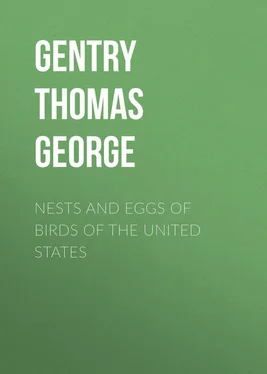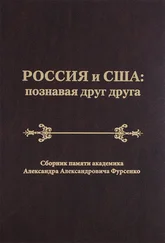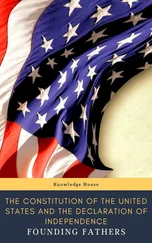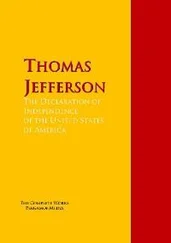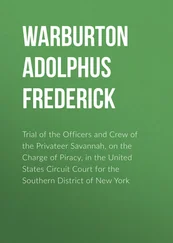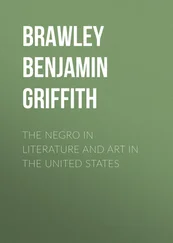Thomas Gentry - Nests and Eggs of Birds of The United States
Здесь есть возможность читать онлайн «Thomas Gentry - Nests and Eggs of Birds of The United States» — ознакомительный отрывок электронной книги совершенно бесплатно, а после прочтения отрывка купить полную версию. В некоторых случаях можно слушать аудио, скачать через торрент в формате fb2 и присутствует краткое содержание. Жанр: foreign_antique, foreign_prose, на английском языке. Описание произведения, (предисловие) а так же отзывы посетителей доступны на портале библиотеки ЛибКат.
- Название:Nests and Eggs of Birds of The United States
- Автор:
- Жанр:
- Год:неизвестен
- ISBN:нет данных
- Рейтинг книги:5 / 5. Голосов: 1
-
Избранное:Добавить в избранное
- Отзывы:
-
Ваша оценка:
- 100
- 1
- 2
- 3
- 4
- 5
Nests and Eggs of Birds of The United States: краткое содержание, описание и аннотация
Предлагаем к чтению аннотацию, описание, краткое содержание или предисловие (зависит от того, что написал сам автор книги «Nests and Eggs of Birds of The United States»). Если вы не нашли необходимую информацию о книге — напишите в комментариях, мы постараемся отыскать её.
Nests and Eggs of Birds of The United States — читать онлайн ознакомительный отрывок
Ниже представлен текст книги, разбитый по страницам. Система сохранения места последней прочитанной страницы, позволяет с удобством читать онлайн бесплатно книгу «Nests and Eggs of Birds of The United States», без необходимости каждый раз заново искать на чём Вы остановились. Поставьте закладку, и сможете в любой момент перейти на страницу, на которой закончили чтение.
Интервал:
Закладка:
Mating does not occur until the 10th of May, more than two weeks after the advent of the sexes. But from the first, the male, who precedes his partner by some two or three days, may be heard in the early morning, and quite as frequently at the close of the day, from the tall tree-tops, chanting his wanton rhapsodies, for a half-hour at a time, utterly unmindful of passers-by. His roundelay, which is undoubtedly the free and happy expression of a heart actuated by the generous impulses of love, though composed of rather shrill and sprightly notes, and uttered with considerable agitation, is quite as pleasing as that of his nearest kin, the Baltimore Oriole. Clear, distinct and resonant, it thrills the air around, and is at last borne to the ears of some lonely female, tired with travel, and unblest by a partner. The life of the Orchard Oriole seems to be one of joyous song. Although, fond of a dainty tid-bit, in the form of a juicy worm, he is not given to gormandizing; he only eats from sheer necessity; for, after having satisfied the demands of Nature, he resumes his soul-stirring strains, to the delight of man and bird.
The sexes having come together in a wise and business-like way, with little or none of the bluster that is customary on such occasions, a conference ensues, which results in a temporary separation for mutual good; one bird going in one direction, and the other in an entirely opposite course. The selection of a suitable spot for a home is the vera causa of this divergence. This is evidently a labor of little moment, as, ordinarily, but a day or two is thus spent. It must not be inferred, however, that the birds are not particular as to place. A large experience has convinced us that great care and deliberation are then exercised. Many a tree is visited, and often the same tree again and again, before a decision is reached; and when at last a suitable site has been chosen, the happy pair set to work with praiseworthy diligence to construct a home.
As previously remarked, an apple- or a pear-tree is generally chosen for nesting purposes. This is especially the case, as far as we are able to ascertain, in the Central and Western States; but in Texas, the nest is suspended from the upper branches of a mesquite-tree. In the North, the common red maple, and several species of coniferous trees, are occasionally chosen, from some peculiar advantages which they possess. A nest in the writer's collection, which was built in the summit of a common swamp maple, occupies a very anomalous position. It is placed within a crotch formed by four nearly upright, slightly divergent branches, and is secured by long, flexible grasses from the nest, wrapped tightly around the twigs. Another specimen, from Germantown, Pa., is made to dangle from the end of a pine-branch. A peculiarity about the latter nest is the strained position which the four branches to which it is fastened are made to assume. The main twig, which is also the thickest (being about three-fourths of an inch in diameter) shows evidence of having been forced from a horizontal position to one that is almost vertical. The latter is really the best authenticated case we have seen of the truly pensile style of nest. In most instances these structures are but partially suspended, being supported from beneath by projecting branches.
In five or six days from the time of the assumption of matrimonial relations, the nest is started, and through the united efforts of both birds for the period of a week, is brought to completion. Although nidification usually commences about the 20th of May, from some inexplicable cause or other, this essential business is often deferred until the middle of June and, occasionally, as late as the beginning of August. But in the latter case, the birds are undoubtedly prevented by varions accidents from carrying out their designs earlier in the season. In the building of a home, either the male collects the materials, and the female weaves them into a nest, or the converse is the case.
There is little variety noticeable in the materials that compose the nest. The generality of domiciles which we have seen from Texas, Georgia, Florida, New Jersey, Pennsylvania, and several of the Western States, have no lining, but are entirely constituted of one substance – a flexible kind of grass or reed. In a few cases we have discovered a slight lining of vegetable wool, doubtless plucked from the young and developing fronds of various species of ferns. Bits of yarn, down of seeds, and animal wool, have been mentioned by various observers as occasional linings.
Such is the homogeneity of its texture, that once seen and recognized, it can never be forgotten or confounded. A nest from Texas is the exact counterpart of a similar structure from Pennsylvania, or of one from Michigan. The abundance of the particular species of grass out of which these birds construct their homes, and the facility with which it is obtainable in localities remote from each other, conspire to produce the resemblances which are found to exist.
Plate IV exhibits a nest of this species which was obtained in the vicinity of Germantown, Pa., during the summer of 1880. It was suspended from the branches of a pear-tree, in the manner shown in the drawing, at an elevation of forty feet from the ground. It is built exteriorly of a peculiar kind of long, tough and flexible grass, which is common in Pennsylvania. The material is woven through and through in a very wonderful manner, and with as much neatness and intricacy as if actually done by a needle. It is hemispherical in shape, and open at the top. The external diameter is four inches, and height two and a half inches; the cavity is two and a half inches wide, and two and three-quarters in depth. The color of the outside is yellow, while that of the inside is a deep brownish-red.
Another specimen which the writer possesses from the same locality, is built of the same material, more highly colored interiorly, but less so exteriorly. It is pouch-shaped, and measures two and a half inches in internal diameter, and four and a half inches in depth. The length is five inches, and the external diameter three inches. When in position, this nest was so placed that the short spurs of the pear upon which it was built, with their beautiful green wreaths of leaves, met and roofed it over, thus constituting a natural covering for the protection of the young during the prevalence of inclement weather.
Dr. Brewer describes a nest taken by Mr. Brandigee in Berlin, Conn. This structure was elaborately and skilfully woven of long green blades of grass, lined on the inside with bits of yarn, animal wool, and a woolly substance of purely vegetable origin. In external diameter and height it measured four inches; in depth, three inches, and in internal diameter three and a half inches – being widest in the middle. Specimens, similarly colored, have been frequently observed in Pennsylvania.
By far the most remarkable structure which we have seen is the one we are about to describe. This domicile was built in a red or swamp maple, at an elevation of nearly thirty feet from the ground. It is a double nest, composed entirely of long, flexible, yellow grasses, and securely fastened between three nearly vertical branches, in a linear direction. The main nest is inversely sub-conical, four inches high, with an external diameter of three and a half inches in the middle, and four at the top. The diameter of the cavity is three inches, and the depth two and three-fourths inches. The smaller is joined to the first by a continuation of the grasses of the latter, is somewhat similarly shaped, but less compact in structure. The height is one and three-fourths inches, external diameter in the long direction three and one-fourth inches, and in the short, but two inches. The depth of the cavity is one and three-fourths inches, and the width, one and a half inches. In one side there is a circular hole one inch in diameter. Various opinions have been ventured as to the object of this additional structure. Some have contended that it was never intended for occupancy or ornament, but is simply a fabric which the authors have failed to complete. But its completeness and finish operate against such a theory. The writer, as well as others who have witnessed this curious specimen of mechanism, are convinced that it was erected for a special purpose – namely, the accommodation of either parent while the other is sitting. The opening alluded to, served for the head of the nonsitting bird, who, from his position, looking away from the main building, could detect the approach of enemies, like a sentry upon an outpost.
Читать дальшеИнтервал:
Закладка:
Похожие книги на «Nests and Eggs of Birds of The United States»
Представляем Вашему вниманию похожие книги на «Nests and Eggs of Birds of The United States» списком для выбора. Мы отобрали схожую по названию и смыслу литературу в надежде предоставить читателям больше вариантов отыскать новые, интересные, ещё непрочитанные произведения.
Обсуждение, отзывы о книге «Nests and Eggs of Birds of The United States» и просто собственные мнения читателей. Оставьте ваши комментарии, напишите, что Вы думаете о произведении, его смысле или главных героях. Укажите что конкретно понравилось, а что нет, и почему Вы так считаете.
